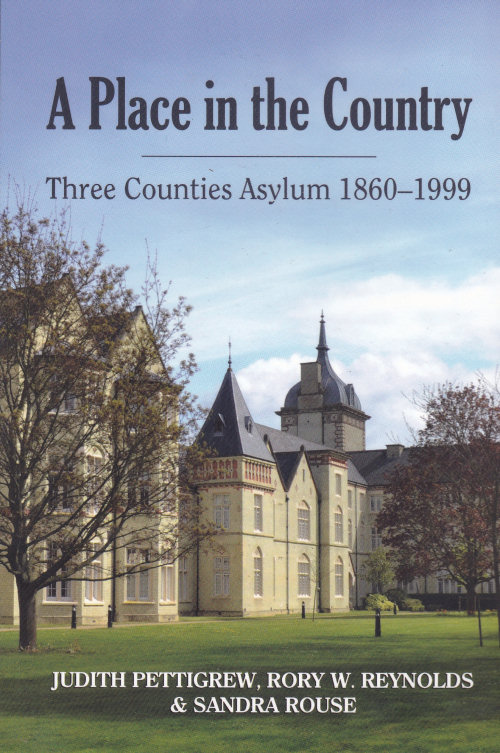 |
|
||||
|
A Place in the Country Three Counties Asylum 1860-1999 Judith Pettigrew, Rory W Reynolds & Sandra Rouse Hertfordshire Publications 2017 ISBN 978-1-909291-50-8
|
|||||
|
In 1837, at the time the Union Workhouses were being introduced, the counties of Hertfordshire and Huntingdonshire started to send their pauper lunatics to the Bedford Asylum. This proved inadequate and in 1860 the Three Counties Asylum opened at Arlesey, Bedfordshire and continued until 1999, when all the old Victorian Asylums were being phased out. This book provides an excellent account of the building of the asylum and the changes in the way the patients changes over 140 years. In the early years the asylum was very much seen as a pleasant place in the countryside where the "patients" could be housed, separately for the men and women, and where those who were well enough could work. For instance in 1864 the asylum contained 229 men, of whom 130 were employed - including 60 who worked on the land (the asylum included a farm) and there were 6 shoemakers, 3 tailors, 4 carpenters and 2 painters. Of the 276 women180 were employed, including 42 who worked in the laundry. While the book describes the inmates as patients there is very little evidence of any effective treatment and many remained in the asylum for the rest of their lives. Various forms of entertainment were provided - with activities such a fortnightly dances, and countryside walks. There was a theatre and a cricket ground. |
Introduction | |||
| 1 | Planning and Building the Asylum | |||
| 2 | The Social Landscape of the Victorian Asylum | |||
| 3 | Edwardian Pstchiatry and the First World War | |||
| 4 | Modernisation, New Therapies and the NHS | |||
| Appendix: Schedule of Forms of Insanity | ||||
| Index | ||||
|
In the Edwardian period more attention was paid to the treatment of the patients and I was most interested to read about what happened during the First World War. Some of the asylums were used as hospitals for wounded soldiers and the normal patients were moved elsewhere, including to the Three Counties Asylum. This meant it had to cater for larger numbers of patients while many of the staff left to take part in the fighting. In addition, as the war progressed, there were increasing numbers of former soldiers who suffered from shell shock, including some case studies. While the building remained much the same, more modern approaches towards the active treatment of mental illness were being adpted from the 1930s. In the Second World War the asylum was used for the patients from Hill End Hospital, St Albans, which was taken over by St Bartholomew's Hospital, London. After the war more modern medical practices were introduced, and the farm was close in 1956, and when patients were moved back into the community the asylum finally closed in 1999. |
| Locating
Books At the time this page was last updated new copies were were available online |
| December 2017 | Page Created | |

